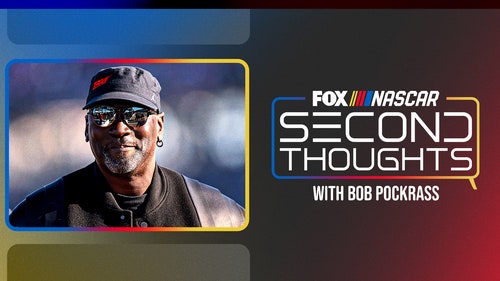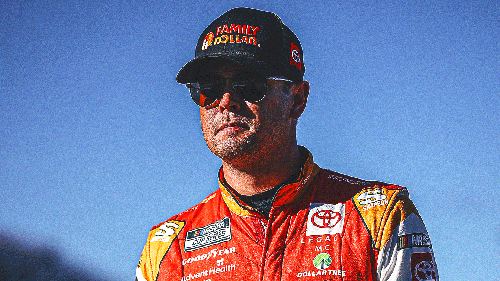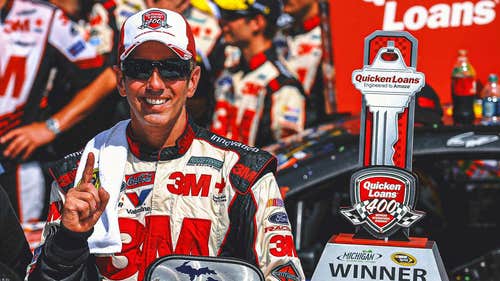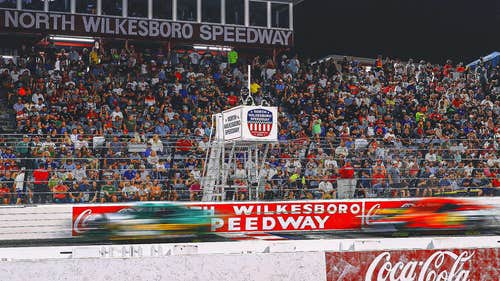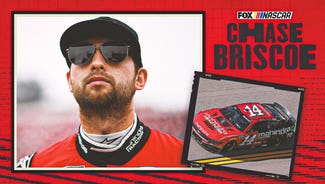
14 Turns, 14 Questions At Daytona
By Bob Pockrass
The Daytona International Speedway road course – the replacement for Watkins Glen International on the NASCAR circuit this weekend – has never been used for a NASCAR stock-car race.
It is a fairly famous road course, though, as it is used for the Rolex 24 at Daytona (a race put on by NASCAR-owned IMSA) and was used for an International Race of Champions in 2006. It will also be used for the exhibition Busch Clash next year.
"I think me leading everybody into Turn 1 at Daytona could be interesting because I have no freaking clue where I'm going as we go down there," said Kevin Harvick, who is on the pole for the Cup race Sunday. "Most everybody in the field is the same way.
"We'll prepare the best that we can and hope that we can make it around the first lap with all the wheels still headed in the right direction."
So in the spirit of the 14 turns of the course, here are 14 questions and attempts at answers:
How long is the course?
Well, depends who is asked. The folks at Daytona International Speedway say 3.57 miles, but the folks at NASCAR competition (DIS is owned by NASCAR) say 3.61 miles. The difference is the addition of the chicane coming off of the oval on Turn 4. Daytona says it adds 0.01 miles to the course. NASCAR says it adds 0.04.
Who has experience racing on the course?
Plenty of drivers have experience in a sports car having run the Rolex 24 or when they also raced in the IMSA event that occurred in the summer. Those drivers include Clint Bowyer (2013), Kurt Busch (2005, 2008), Kyle Busch (2009, 2020), James Davison (2014-16), Kevin Harvick (2002), Brendan Gaughan (2009, 2011, 2016, 2018), Timmy Hill (2012), Jimmie Johnson (2004-05, 2007-11), Matt Kenseth (2005) and Michael McDowell (2005-08, 2011-12). Cole Custer has experience on the road course in the IMSA support series Michelin Challenge.
Kenseth, Martin Truex Jr. and Ryan Newman competed in the IROC race on the road course in 2006.
What have drivers been doing to get ready?
Most have been doing simulation work — each manufacturer has a racing simulator and has the track data from its road-course racing programs. Drivers can use those to learn where the turns are and how the car will handle. AJ Allmendinger, a former Rolex 24 winner, said: "It’s hard on tires so you’ve got to somehow not abuse the tires overall. ... Learning the race track is very simple."
Who are the favorites in Cup?
Chase Elliott has won the last two NASCAR road-course races – last year at the Charlotte road course and at Watkins Glen. So count him among them. Martin Truex Jr. has won three of the last seven Cup road-course races.
When you look at those with road-course experience at Daytona, Kyle Busch had it most recently.
Are the engine and aerodynamics rules the same as other road-course races?
Yes and no. NASCAR is using the 750 horsepower engine package – the engines used with the 550hp package are not designed aggressively enough to perform well with shifting – but NASCAR is using the high downforce, high drag spoiler and front splitter settings (big spoiler, big splitter) that typically is used on the big ovals with the 550hp package. It is designed to keep the speeds down by increasing drag. In two weeks for the race on the Daytona oval, the engines will be 510hp.
Why are they racing on this course?
NASCAR opted to move the race from Watkins Glen. The track relies on camping, which likely would not have been allowed. And NASCAR, with the bulk of the participants from North Carolina, would be coming from a state that is on New York’s mandatory 14-day quarantine list. The ability to go and not be in public places for teams and officials (the requirements for visiting sports teams) for a weekend with multiple races was just too much.
Why won’t NASCAR allow drivers to do more than one race?
NASCAR didn’t want a bunch of drivers trying to buy rides in other series to get experience, potentially gaining an advantage for another race during the weekend since there is no practice nor qualifying for these events. So NASCAR put in a rule that drivers can only compete in one race this weekend, which includes an ARCA race Friday, an Xfinity race Saturday, and then Gander RV Trucks and Cup races Sunday.
Why did NASCAR add a chicane on the front-stretch?
The turn from the oval to the road course just past the end of pit road in the trioval is a sharp turn. NASCAR and teams were concerned about the speed and braking needed to make that turn. They weren’t sure that going more than 200 mph would be safe when considering the ability to brake and potentially wearing out the brakes.
Why won’t NASCAR let teams practice?
Great question. Leavine Family Racing crew chief Jason Ratcliff said it would take his team two days to prepare a backup car, so not needing one – if there was a practice, all teams would have wanted backup cars in case of a crash – helped immensely with preparation. Denny Hamlin, though, wished for just a few laps of practice prior to the race.
"Why not have the implication of knowing that this 30-minute practice session, if you wreck, you finish last," Hamlin said. "[That’s] just like you would in the race. If someone is going to wreck in that 30-minute practice session, they were more than likely going to wreck in the race anyway."
Do teams have a good grasp of fuel mileage?
That probably depends on your definition of 'good.' They have a good idea, just as they have a good idea every weekend since they are doing all preparation by simulation. But without knowledge of how tire wear will be, it certainly will be an educated guess. At least some drivers and crew chiefs think you will need tires at the stage breaks so there might not be as much incentive to base pit stops on fuel rather than cautions.
Can they race in the rain?
Yes. Goodyear will bring the same rain tire the Xfinity Series used at Road America last weekend. NASCAR won’t race if lightning is within eight miles (there needs to be 30 minutes of no strikes within that radius). It also potentially would stop the race if the downpour creates too many visibility issues or dangerous puddling.
Can they race at night?
Daytona is putting some temporary lighting in the infield in case weather pushes them into night. The IMSA cars have headlights but there already was some lighting in the infield, just not as much as drivers would need without headlights.
What are positives of racing this course?
It is a historic course in the sense it is used for the Rolex 24. And it is something new. Plus, with the cancellation of the Sonoma and Watkins Glen races, it puts a road course on the schedule for the Cup regular season.
What are the negatives of racing this course?
With no practice, this is a recipe for chaos. Some chaos is good and makes things fun. A lot of chaos makes it appear as a joke. Tune in this weekend to find out what type of chaos NASCAR gets.
On The Air
Saturday
Xfinity UNOH 188 (Daytona road course), 3 p.m., NBCSN
Sunday
Gander RV Trucks Sunoco 159 (Daytona road course), noon, FS1
Cup Go Bowling 235 (Daytona road course) 3 p.m., NBCSN
Stat of Note
With his sweep at Michigan, 44-year-old Kevin Harvick has 24 of his 55 career wins (44 percent) since turning 40.
Social Spotlight
They Said It
"I came into this sport wanting to win races and be a household name on the track, so we have a lot of work to do as a team and together, to get there. So again, we’re figuring out all our options and figuring out the best solution for both of us to go out and be competitive on the race track." – Bubba Wallace, who has not decided yet whether he will return to Richard Petty Motorsports in 2021.






































































































































